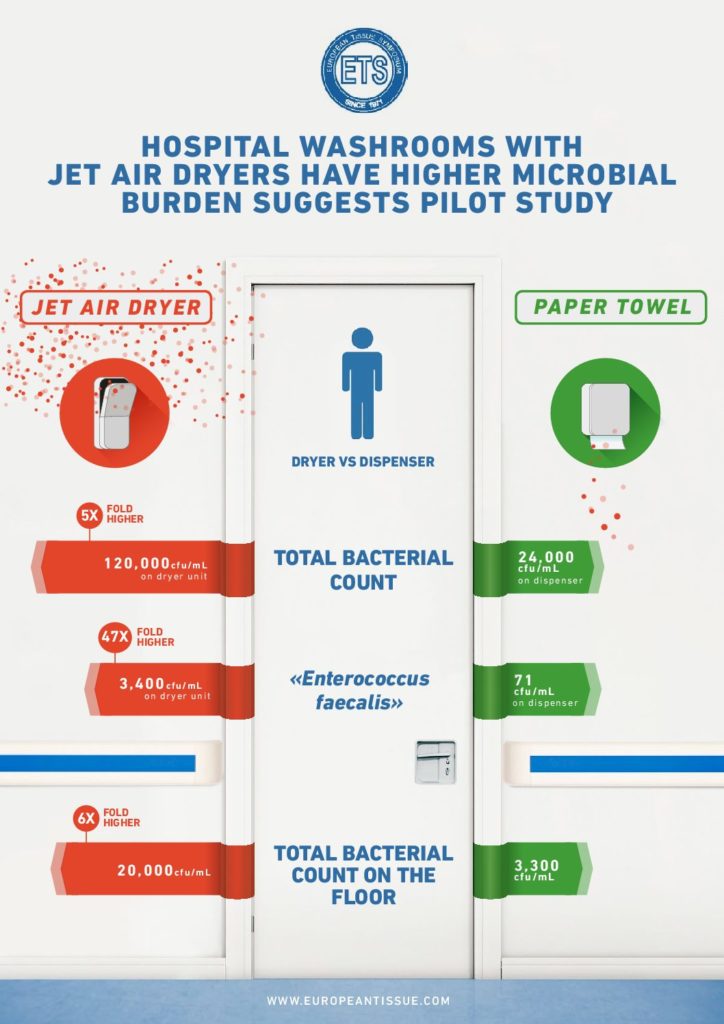Hospital washrooms with jet air dryers have higher microbial burden suggests pilot study
Further studies are encouraged to determine risk of environmental microbial contamination resulting from different hand-drying methods
November 2017- A pilot study undertaken by experts from the Microbiology department at Leeds Teaching Hospitals NHS Trust and the University of Leeds suggests that hospital washrooms with jet air dryers may have higher levels of environmental microbial contamination than those using single-use paper hand towels.
The study which was performed over three months, was undertaken by leading microbiologist Professor Mark Wilcox and funded by the European Tissue Symposium, ETS. The levels of environmental microbial contamination were examined in two men’s washrooms within one hospital: one had paper hand towels as the method of hand drying after hand washing and the other a jet air dryer. The washrooms were used by hospital staff, patients and visitors.
Professor Wilcox, who led the study, explained “There were some significant differences and generally lower levels of microbial contamination in the paper towel washroom than in the jet air dryer washroom. A greater range of microbes was recovered from the jet air dryer washroom, the floor and dryer unit were more heavily contaminated, and mean counts of microorganisms recovered from air were 1.6 fold higher.”
Notably, higher counts of Enterococcus faecalis, which could be related to toileting, followed by suboptimal handwashing, were recovered from the washroom with the air dryer versus the washroom with single use paper towels.
The pilot study concluded that it is feasible to carry out longitudinal testing to examine the levels of environmental contamination associated with different hand-drying methods. The study suggests that microbial burdens may be higher in hospital washrooms employing jet air versus paper towel hand drying.
These findings could  have significant implications for hospitals. General infection prevention and control principles in healthcare settings aim to limit the spread of micro-organisms due to the increased susceptibility of patients to infection and to the greater prevalence of potential and/or antimicrobial-resistant pathogens.
have significant implications for hospitals. General infection prevention and control principles in healthcare settings aim to limit the spread of micro-organisms due to the increased susceptibility of patients to infection and to the greater prevalence of potential and/or antimicrobial-resistant pathogens.
To read the letter abstract and download it see at the page:
http://www.journalofhospitalinfection.com
“The key issue is whether this could have adverse infection consequences for washroom users or, in a clinical setting, patients,” explains Professor Wilcox. “We encourage further studies to determine the risks associated with hand-drying method-associated environmental microbial contamination.”
This page is also available in: Italian












